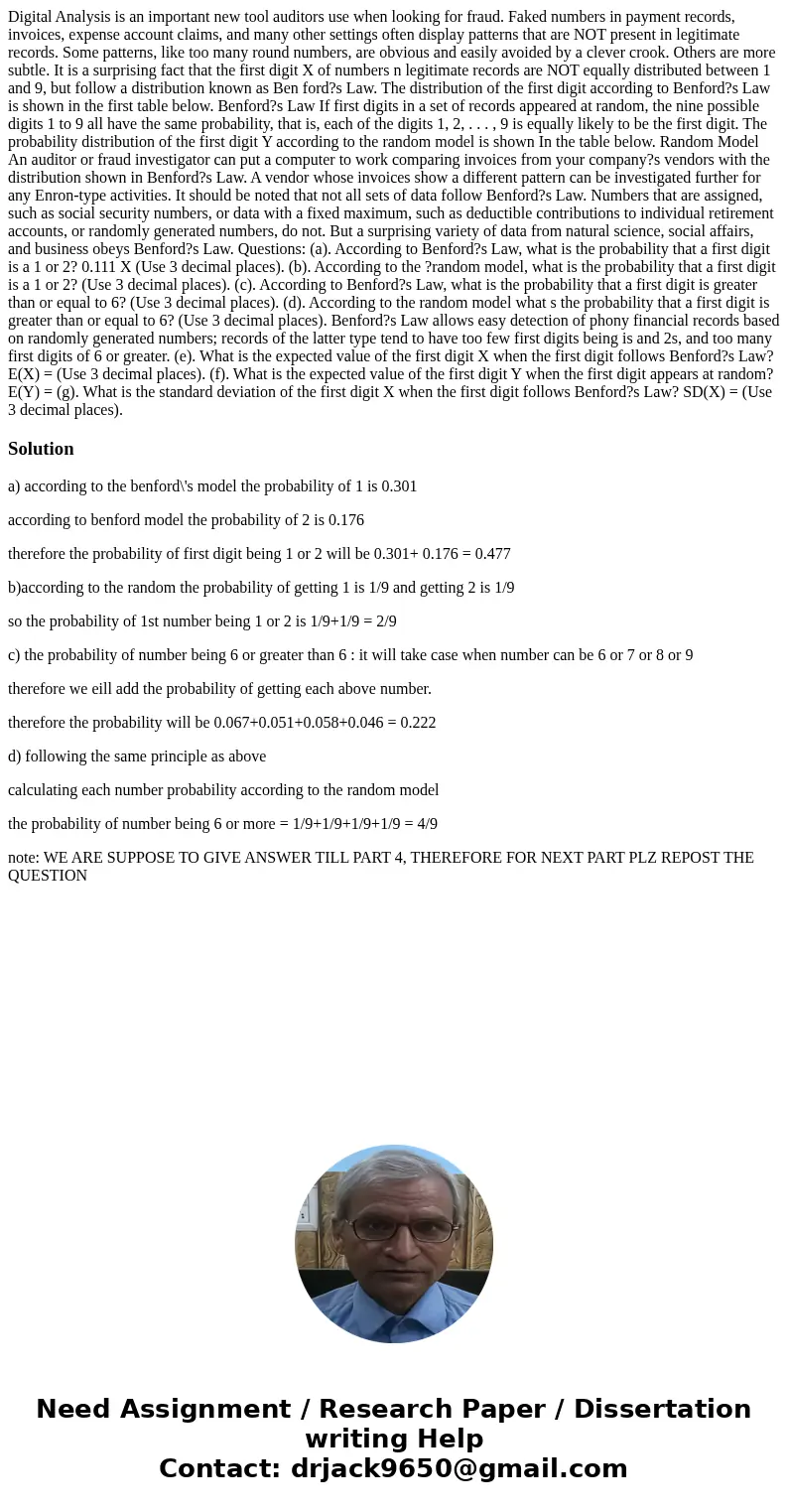Digital Analysis is an important new tool auditors use when looking for fraud. Faked numbers in payment records, invoices, expense account claims, and many other settings often display patterns that are NOT present in legitimate records. Some patterns, like too many round numbers, are obvious and easily avoided by a clever crook. Others are more subtle. It is a surprising fact that the first digit X of numbers n legitimate records are NOT equally distributed between 1 and 9, but follow a distribution known as Ben ford?s Law. The distribution of the first digit according to Benford?s Law is shown in the first table below. Benford?s Law If first digits in a set of records appeared at random, the nine possible digits 1 to 9 all have the same probability, that is, each of the digits 1, 2, . . . , 9 is equally likely to be the first digit. The probability distribution of the first digit Y according to the random model is shown In the table below. Random Model An auditor or fraud investigator can put a computer to work comparing invoices from your company?s vendors with the distribution shown in Benford?s Law. A vendor whose invoices show a different pattern can be investigated further for any Enron-type activities. It should be noted that not all sets of data follow Benford?s Law. Numbers that are assigned, such as social security numbers, or data with a fixed maximum, such as deductible contributions to individual retirement accounts, or randomly generated numbers, do not. But a surprising variety of data from natural science, social affairs, and business obeys Benford?s Law. Questions: (a). According to Benford?s Law, what is the probability that a first digit is a 1 or 2? 0.111 X (Use 3 decimal places). (b). According to the ?random model, what is the probability that a first digit is a 1 or 2? (Use 3 decimal places). (c). According to Benford?s Law, what is the probability that a first digit is greater than or equal to 6? (Use 3 decimal places). (d). According to the random model what s the probability that a first digit is greater than or equal to 6? (Use 3 decimal places). Benford?s Law allows easy detection of phony financial records based on randomly generated numbers; records of the latter type tend to have too few first digits being is and 2s, and too many first digits of 6 or greater. (e). What is the expected value of the first digit X when the first digit follows Benford?s Law? E(X) = (Use 3 decimal places). (f). What is the expected value of the first digit Y when the first digit appears at random? E(Y) = (g). What is the standard deviation of the first digit X when the first digit follows Benford?s Law? SD(X) = (Use 3 decimal places).
a) according to the benford\'s model the probability of 1 is 0.301
according to benford model the probability of 2 is 0.176
therefore the probability of first digit being 1 or 2 will be 0.301+ 0.176 = 0.477
b)according to the random the probability of getting 1 is 1/9 and getting 2 is 1/9
so the probability of 1st number being 1 or 2 is 1/9+1/9 = 2/9
c) the probability of number being 6 or greater than 6 : it will take case when number can be 6 or 7 or 8 or 9
therefore we eill add the probability of getting each above number.
therefore the probability will be 0.067+0.051+0.058+0.046 = 0.222
d) following the same principle as above
calculating each number probability according to the random model
the probability of number being 6 or more = 1/9+1/9+1/9+1/9 = 4/9
note: WE ARE SUPPOSE TO GIVE ANSWER TILL PART 4, THEREFORE FOR NEXT PART PLZ REPOST THE QUESTION

 Homework Sourse
Homework Sourse